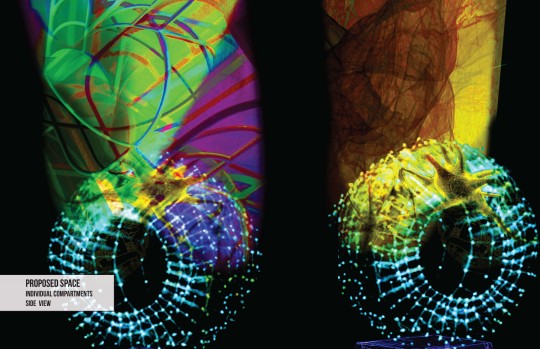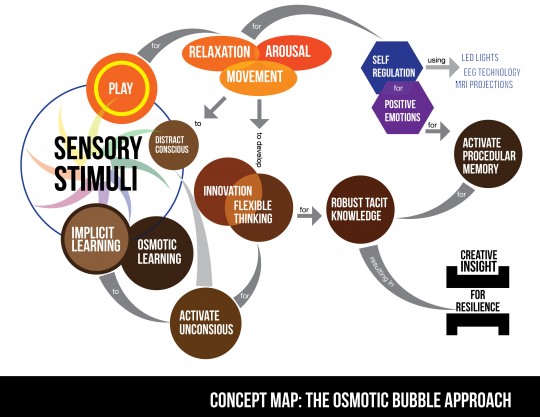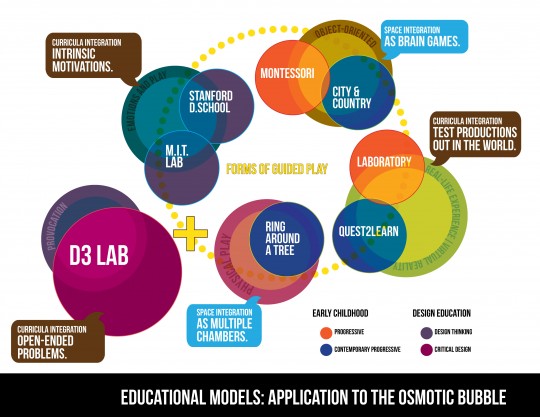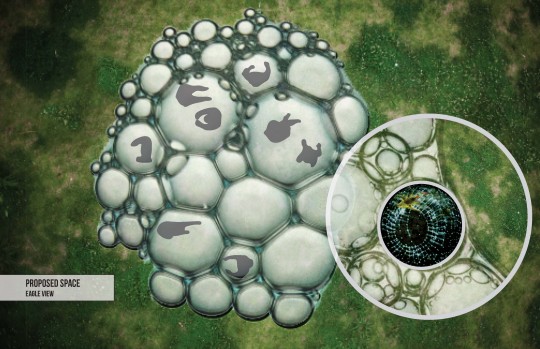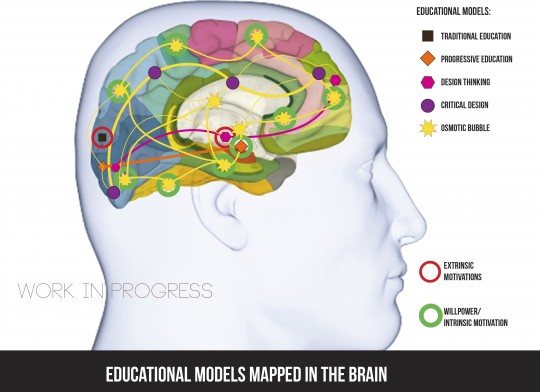A Conference on Institutions and Innovation in the 18th and 21st Centuries
April 10th and 11th, 2014 at the Illinois Institute of Technology
Abstract from “The Osmotic Bubble: Creative Insight by Dint of Synchronized Atmospheres”
By Gigi Polo
Traditional education—based on memorization, and behaviorist theories of conditioning through external motivations of punishment and rewards—is a passive transference of limited knowledge from teacher to student, and of inflexible power relations based on exercising control through fear tactics of extrinsic motivations, such as testing and grading systems. Design education is no different. Educational models of the 19th and 20th century, developed for an industrial society—such as Bauhaus pedagogy—are still current in many design schools while losing relevance in the ever-changing landscape of a post-industrial world.
The study of progressive education pedagogies—curricula, and objects of instruction— and design education—studio settings, design process, and design application—in relation to the ways in which the human brain learns, processes information, produces new-robust knowledge, was the main focus of my research. An understanding of learning theories of neuroscience and cognitive neuroscience, informed my approach in designing a learning environment, which included new curricula, and a physical built space. An important aspect of my research was to understand the significance of unconscious ways of knowing (implicit learning), the implications of design[ing] as the foundation of a new pedagogy, and to explore the nuances of the unconscious mind as it acts as a cultural form. Using a series of self-report psychological tests, ethnographic research, and in-class experiments with First Year design students, I was able to study the effects of implicit learning in a classroom setting. Results showed that implicit instruction has an effect in certain cognitive styles. An interesting pattern arose from the data, in terms of faculty assessment, with a high level of disagreement in most ratings. However, further research is needed in order to get conclusive evidence.
Although the Osmotic Bubble currently concentrates on design students in particular, on a larger scale, this holistic learning approach will be most effective at an early age—between 3 and 4 years old—when children have yet to learn cultural beliefs, and instead strive on self-belief. I have started with design students because, creative personalities have many similarities to children’s personalities: they have a fertile imagination, impulsive, risk-takers, and dreamers.
Education has to embrace a holistic approach that primes the next generation of innovators and, ultimately, transform into transitional-learning spaces—the in-between, exploratory, space of inner/unconscious and outer/conscious self—that permeate everyday life and become part of the early childhood educational system. Schools need to strive to stimulate the minds of children in becoming creators, pioneers, and innovators—the new designers of possible futures.
All photos courtesy of Gigi Polo


























